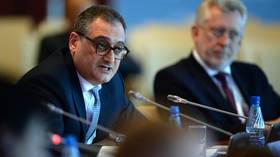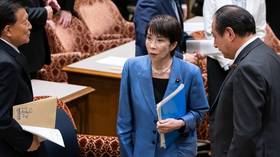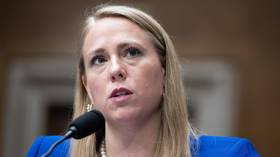The Central Asian nation is seeing a wave of mass protests triggered by price rises
Kazakhstan has had a rocky start to the new year, with protests spreading across the huge country. This is how a spike in the cost of liquefied petroleum gas (LPG) prompted thousands to take to the streets.
LPG prices have doubled in a matter of days. The country is a top ten gas exporter and top 20 in the provision of oil.
Reform of fuel market
The spike in prices did not come out of nowhere; it was the result of a sweeping reform launched back in 2019, when Nur-Sultan began a transition to electronic trade in LPG. The amount of LPG traded that way has gradually increased over the past three years, before reaching 100% on January 1.
Twofold price hike of liquefied petroleum gas
The country’s government explained that keeping the fuel price caps that had existed in Kazakhstan for years was no longer economically feasible. LPG producers were effectively forced to sell the product at a cheaper price than it cost to produce, with consumption of LPG steadily growing in the country over the past few years.
Steering the LPG trade into the free market prompted the prices to grow twofold in a matter of days, reaching a wholesale price of around 78 tenge ($0.18) and a retail price of 100-120 tenge ($0.23-0.28).
Mass protests kick off
While the price hike was long-expected, it still prompted mass unrest. Consistently low prices have turned LPG into an extremely popular type of fuel, with many of Kazakhstan’s residents converting their vehicles to use it instead of traditional petroleum. The protests kicked off in Zhanaozen, a city located in the oil and gas producing south-western region of Mangystau.
Protests spread & grow political
Over the past two days, the unrest spilled over into other regions of Kazakhstan, gripping some major cities, including the largest Almaty, and the capital of Nur-Sultan (formerly known as Astana). The protest also grew increasingly political, with the demands of demonstrators quickly growing from reinstating the fuel price caps and lowering food prices to the resignation of the country’s government altogether.
Government folds on LPG prices, but shows force
Kazakhstan’s government has shown a combined approach to quelling the unrest, signaling its readiness to fulfill some of the social and economic demands of protesters. The country’s President Kassym-Jomart Tokayev said the price caps would be reestablished in the Mangystau region, while similar measures have been already rolled out by local authorities in other parts of Kazakhstan.
At the same time, the government dispatched additional police into cities that were gripped by the unrest, and units resembling the military were spotted in the streets of Almaty. The unrest has led to clashes between demonstrators and law enforcement in multiple locations. Several police vehicles have been burned by the rowdy protesters, with the police deploying tear gas and stun grenades to disperse the crowds.
President declares emergency & government resigns
Amid escalating tensions, a state of emergency and a curfew were declared in Almaty, as well as the Mangystau region. On Wednesday morning President Tokayev accepted the government's resignation while appointing Deputy Prime Minister Alikhan Smailov as interim PM until a new cabinet is formed.
You can share this story on social media:
Follow RT on 













